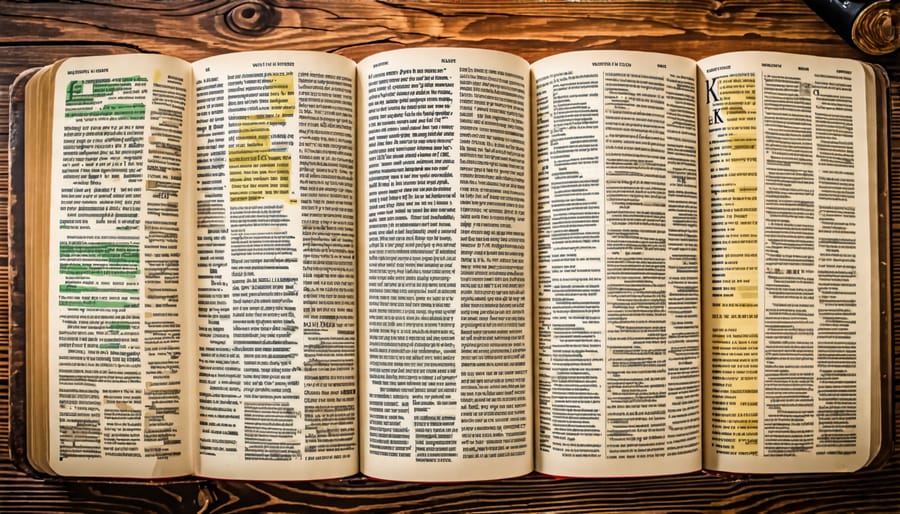The Bible, the world’s most widely read and influential book, has been translated into countless languages over the centuries. With a rich history spanning nearly two millennia, the Bible’s message has reached the far corners of the globe, shaping cultures, inspiring faith, and transforming lives. Yet, amidst this vast tapestry of translations, a question arises: just how many different versions of the Bible exist? As we embark on this exploration, we will uncover the fascinating diversity of biblical translations, from ancient manuscripts to modern interpretations, and gain a deeper appreciation for the enduring power and relevance of God’s Word in our lives.
Types of Bible Translations

Word-for-Word Translations
Word-for-word translations, also known as literal translations, prioritize preserving the original wording and structure of the Hebrew, Aramaic, and Greek texts. These translations aim to accurately convey the meaning of each word and phrase, even if the resulting English may sound unnatural at times. One of the most well-known word-for-word translations is the King James Version, which has been widely used since its publication in 1611. More recent literal translations include the English Standard Version, which seeks to combine word-for-word accuracy with readability. While these translations are valued for their precision, they may require more effort to understand due to their adherence to the original language structures.
Thought-for-Thought Translations
Thought-for-thought translations prioritize readability and conveying the original meaning in contemporary language. These versions aim to capture the essence of the text rather than providing a literal word-for-word translation. Examples include the New International Version (NIV) and the New Living Translation (NLT). The NIV, first published in 1978, seeks to balance accuracy and clarity, making it a popular choice for both personal study and church use. The NLT, released in 1996, presents the Bible’s message in clear, natural English, making it accessible to a wide audience. While thought-for-thought translations may sacrifice some literal accuracy, they offer a more engaging reading experience for modern readers.
Paraphrased Versions
Paraphrased Bible versions, such as The Message and The Living Bible, focus on making the scriptures more accessible and understandable for modern readers. These translations prioritize contemporary language and thought-for-thought renderings rather than word-for-word accuracy. By presenting the Bible in a more conversational and relatable style, paraphrased versions aim to engage readers who may find traditional translations challenging or intimidating. While they can be helpful for gaining a fresh perspective on familiar passages, it’s important to recognize that paraphrased versions often involve more interpretation and may not be suitable for in-depth study or doctrinal discussions.
The Number of Bible Translations
According to recent estimates, there are over 700 different translations of the Bible available worldwide, reflecting the rich linguistic diversity of the global Christian community. Of these, approximately 450 are full Bible translations, meaning they contain both the Old and New Testaments in their entirety. The remaining 250 or so are partial translations, which may include only the New Testament or specific portions of the Bible.
Interestingly, some books of the Bible have been translated more widely than others. The New Testament, in particular, has been a focus for translators, with the Gospel of Mark and the Gospel of John being among the most frequently translated books. In the Old Testament, Genesis and Psalms have also been translated into a significant number of languages.
These numerous translations serve to make the Word of God accessible to people from all walks of life, allowing them to engage with Scripture in their native tongues. As the Bible continues to be translated into more languages, it is clear that its message of hope, love, and redemption resonates with people across the globe, transcending cultural and linguistic barriers.

Choosing a Bible Translation
Choosing the right Bible translation is a personal decision that depends on your unique needs and preferences. Consider your reading level and comprehension skills when selecting a translation. Some versions, like the New International Version (NIV) and New Living Translation (NLT), use more contemporary language and are easier to understand. Others, such as the King James Version (KJV) and English Standard Version (ESV), adhere more closely to the original languages and may be preferred for in-depth study.
Think about your goals for reading the Bible. If you’re looking for a translation that’s easy to read and understand, the NIV or NLT might be a good choice. If you want to dive deeper into the original meaning of the text, the ESV or New American Standard Bible (NASB) could be more suitable.
Don’t be afraid to explore different translations to find one that resonates with you. Many Christians find it helpful to have multiple translations on hand for comparison and to gain a more comprehensive understanding of God’s Word. Remember, the most important thing is to engage with the Bible regularly and allow its timeless wisdom to guide and transform your life.
Conclusion
In conclusion, the Bible’s message transcends language barriers, with a wide array of translations available to suit diverse needs and preferences. From literal to thought-for-thought translations, readers can find a version that resonates with them and helps them understand God’s Word more deeply. While the sheer number of translations may seem overwhelming, this variety is a testament to the Bible’s enduring relevance and the desire of translators to make God’s Word accessible to all. Ultimately, the most important factor in choosing a Bible translation is finding one that encourages regular reading, study, and application of its timeless truths in daily life. By engaging with Scripture, Christians can grow in their faith and draw closer to God, regardless of the specific translation they use.
